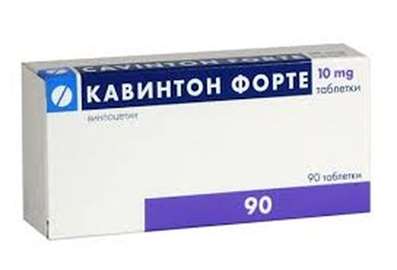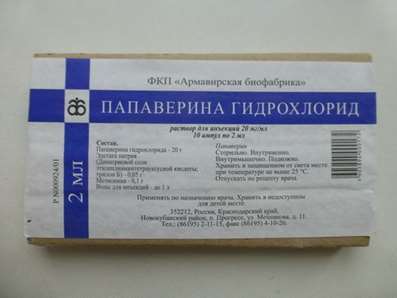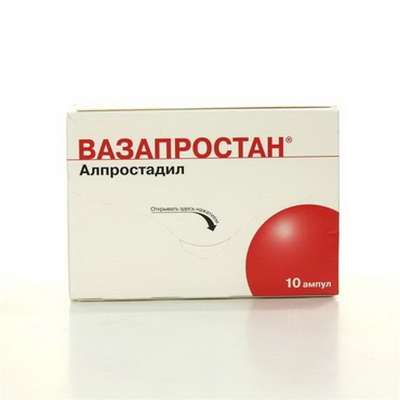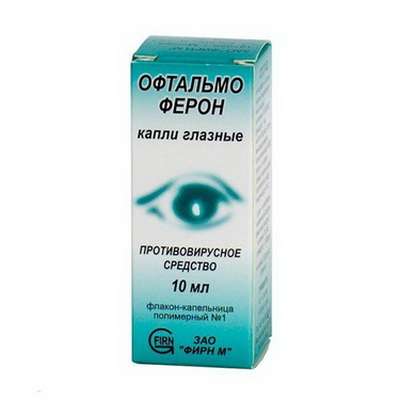Instruction for use: Phenylephrine (Phenylephrinum)
I want this, give me price
Chemical rational name: (R) -3-hydroxy-alpha - [(methylamino) methyl] benzenemethanol (as hydrochloride)
Pharmacotherapeutic group:
Alpha-adrenoceptor agonists
decongestant
Ophthalmic tools
The nosological classification (ICD-10)
A48.3 Toxic shock syndrome
Bacteria-nomic shock, Infectious-toxic shock, intoxication syndrome, Toxic-infectious shock, Toxic shock, Chronic intoxication at diseases of the gastrointestinal tract, Chronic intoxication with gastrointestinal infections, endotoxin shock
H10.9 Conjunctivitis, unspecified
Trahomny conjunctivitis, catarrhal conjunctivitis, Giperpapillyarny conjunctivitis, Non-infectious conjunctivitis, purulent conjunctivitis, Purulent conjunctivitis form, Year-round conjunctivitis, purulent conjunctivitis, Subacute conjunctivitis, Secondarily infected with conjunctivitis
H20 Iridocyclitis
recurrent iritis, sympathetic iridocyclitis, Sluggish posterior uveitis, Sluggish posterior uveitis, Posterior uveitis, the posterior segment of the eye Iridocyclitis, Iridocyclitis and other uveitis, Irit, Keratoiridotsiklit, Acute iritis, uveitis, cycle of Acute iridocyclitis, Acute non-infectious uveitis
H40.8 Other glaucoma
juvenile glaucoma, Chronic open-angle glaucomam, Glaucoma-tsiklitichesky crisis, Posner-Shlossmana syndrome
H599 * Diagnosis / eye disease diagnostics
Angioscopy iris, Gonioscopy, Diagnosis in Ophthalmology, Differential diagnosis of the type of injection of the eyeball, A study of the fundus, A study of the fundus and lens, Control of the rear segment of the eye state, mydriasis, Examination of the retina during surgery, Examination of the retina after surgery, Definition of manifest refraction, Determination of refraction, Determination of refraction using skiascopy, Ophthalmic diagnostics, funduscopy, pupil dilation, Creation of mydriasis, Creating cycloplegic, Fluorescein angiography of retinal vessels, electroretinography
I95 Hypotension
hypotension, Age hypotension, arterial Hypertension, Hypotonic disease, hypotonic reaction, postural hypotension, Symptomatic hypotension, Essential hypotension
I99 Other and unspecified disorders of the circulatory system
angiopathy, Arterial angiopathy, Atherosclerotic angiopathy, Hemodynamic right heart defects, Hemodynamic defect of the right heart, coronary angiopathy, Infringement of blood circulation, Violation of circulation, Violation microcirculation in organs and tissue, Peripheral circulatory disorders, Disorders of the peripheral circulation in the extremities, circulatory failure, Hemodynamic instability occlusion of arteriovenous origin, Acute circulatory failure, Psevdostenokardicheskie state, Psevdostenokardicheskoe disorder, circulatory disorder, Cardiovascular diseases, Vascular insufficiency, Thrombosis arteriovenous shunt, Thrombosis with prosthetic heart valves, Deterioration of blood circulation in the pelvic organs, Functional failure of the cardiovascular system, Functional disorders of the cardiovascular system, Chronic arterial insufficiency, Chronic heart failure, Age-related vascular disease, The risk of thrombosis
J00 Acute nasopharyngitis [runny nose]
Viral rhinitis, Inflammation of the nasopharynx, Inflammatory diseases of the nose, purulent rhinitis, Nasal congestion, Nasal congestion with colds and flu, The difficulty of nasal breathing, The difficulty of nasal breathing for colds, Difficulty in nasal breathing, Difficulty in nasal breathing in colds, nasal, hypersecretion, cold, ARI with rhinitis phenomena, coryza, Acute rhinitis of various origins, Acute rhinitis with thick purulent mucous exudate, Acute nasopharyngitis, Swelling of the mucosa of the nasopharynx, Rhinitis, rhinorrhea, Infectious-inflammatory diseases of ENT organs, heavy cold, rhinopharyngitis, nasopharyngitis
J01 Acute sinusitis
Inflammation of the sinuses, Inflammatory diseases of the paranasal sinuses, Purulent inflammation of the paranasal sinuses, Infectious-inflammatory diseases of ENT organs, Infection of the sinuses, Combined sinusitis, Exacerbation of sinusitis, Acute inflammation of the paranasal sinuses, Acute bacterial sinusitis, Acute sinusitis in adults, Subacute sinusitis, acute Sinusitis, sinusitis
J06 Acute upper respiratory infections of multiple and unspecified
Frequent colds viral diseases, Infections of the upper respiratory tract, Acute respiratory disease influenza character, for colds Pain, Acute colds,Cold, respiratory infection,Seasonal colds, Pain in infectious and inflammatory diseases of the upper respiratory tract, Bacterial infections of the upper respiratory tract, Bacterial respiratory infections, Viral disease of the respiratory tract, Viral respiratory tract infections, Inflammatory disease of the upper respiratory tract, Inflammation of the upper respiratory tract disease, Inflammation of the upper respiratory tract illness with difficult sputum, Inflammatory airway disease, Secondary infections with colds, Shortness of sputum in acute and chronic respiratory diseases, Upper respiratory tract infection, Infections of the upper respiratory tract, Respiratory Tract Infections, Infections of the respiratory tract and lungs, Infectious-inflammatory diseases of the upper respiratory tract, Infectious-inflammatory diseases of the upper respiratory tract and ENT-organs, Infectious-inflammatory diseases of the upper respiratory tract in children and adults, Infectious-inflammatory diseases of the upper respiratory tract, Infectious inflammation of the airways,respiratory infection, Qatar upper respiratory tract, Catarrh of the upper respiratory tract, Catarrhal disease of the upper respiratory tract, Catarrhal symptoms of the upper respiratory tract, Coughing with a cold, SARS, ARI, ARI with rhinitis phenomena, Acute respiratory infection, Acute infectious and inflammatory disease of the upper respiratory tract, Acute respiratory disease, Sore throat or nose, Respiratory viral infections, Respiratory diseases, Respiratory infections, Recurrent respiratory infections, Secondary infection with influenza, cold in the chest, Feverish condition with flu usitis, acute sinusitis, genyantritis, purulent sinusitis
J11 Influenza, virus not identified
Flu, Influenza in the early stages of the disease, Flu in children, cold in the chest, Begins flu-like condition, Acute disease parainfluenza, parainfluenza, parainfluenza state, influenza epidemics, The pains of the flu, Influenza
J30 Vasomotor and allergic rhinitis
Allergic rinopatiya, Allergic rhinosinusopathy, Allergic respiratory diseases, Allergic rhinitis, nasal allergy, Seasonal Allergic Rhinitis, Vasomotor rhinitis, Long-allergic rhinitis, Perennial allergic rhinitis, Perennial allergic rhinitis, Year-round or seasonal allergic rhinitis, Year-round allergic rhinitis nature, Rhinitis allergic vasomotor, Exacerbation of pollen allergy in the form of Syndrome rinokonyunktivalnogo, Acute allergic rhinitis, Edema of the nasal mucosa, Edema of the nasal mucosa, Swelling of the mucosa of the nasal cavity, Swelling of the nasal mucosa, Swelling of the nasal mucosa, pollen disease, Permanent allergic rhinitis, rhinoconjunctivitis, rhinosinusitis,rhinosinusopathy, Seasonal allergic rhinitis, Seasonal Allergic Rhinitis, Haymarket rhinitis, Chronic allergic rhinitis, Allergic respiratory diseases
R57.9 Shock, unspecified
Pain shock, hemolytic shock, Neurogenic shock, Shock, state of shock
T79.4 Traumatic shock
Hemorrhagic shock, Crush syndrome, hemorrhagic shock, postoperative shock, post-traumatic shock, traumatic shock, hemorrhagic shock and encephalopathy syndrome
Z100 * CLASS XXII Surgical practice
Abdominal surgery, adenomectomy, Amputation, Coronary angioplasty, Angioplasty of the carotid arteries, Antiseptic skin treatment for wounds, Antiseptic Hand, Appendectomy, atherectomy, Balloon coronary angioplasty, Vaginal hysterectomy, The coronary bypass, Interventions in the vagina and cervix, Interventions on the bladder, Intervention in the mouth, Restoration and reconstructive surgery, Hand hygiene of medical personnel, Gynecologic surgery, Gynecological intervention, Gynecological surgery, Hypovolemic shock during operations, Disinfection of purulent wounds, Disinfection of wounds edges, Diagnostic intervention, Diagnostic procedures, Cervical Diathermocoagulation, Long-surgery, Replacing the fistula catheters, Infection in orthopedic surgery, Artificial heart valve, cystectomy, Short-term outpatient surgery, Short-term operation, Short surgical procedures, Krikotireotomiya, Blood loss during surgery, Bleeding during surgery and in the postoperative period, Kuldotsentez, laser photocoagulation, laser coagulation, retinal laser coagulation, Laparoscopy, Laparoscopy in Gynecology, CSF fistula, Small gynecological operations, Small surgical procedures, Mastectomy and subsequent plastic, mediastinotomy, Microsurgical operations on the ear, Mukogingivalnye operation, suturing, Minor surgery, neurosurgical operation, Immobilization of the eyeball in ophthalmic surgery, testectomy, pancreatectomy, Perikardektomiya, The period of rehabilitation after surgery, The period of, convalescence after surgery, Percutaneous transluminal coronary angioplasty, Pleural thoracentesis, Pneumonia postoperative and posttraumatic, Preparation for surgical procedures, Preparation for surgery, Preparation of the surgeon's hands before surgery, Preparation of the colon for surgical procedures, Postoperative aspiration pneumonia in neurosurgical and thoracic surgery, Postoperative nausea, Postoperative bleeding, postoperative granuloma, postoperative shock, The early postoperative period, myocardial revascularization, Radiectomy, gastric Resection, bowel resection, uterine Resection, liver Resection, enterectomy, Resection of part of the stomach, Reocclusion of the operated vessel, Bonding tissues during surgical procedures, Removal of sutures, Condition after eye surgery, Condition after surgery, Condition after surgery in the nasal cavity, Condition after gastrectomy, Status after resection of the small intestine, Condition after tonsillectomy, Condition after removal of the duodenum, Condition after phlebectomy, Vascular surgery, Splenectomy, Sterilization of surgical instruments, Sterilization of surgical instruments, sternotomy, Dental surgery, Dental intervention in periodontal tissues, strumectomy, Tonsillectomy, Thoracic surgery, total gastrectomy, Transdermal intravascular coronary angioplasty, Transurethral resection, Turbinektomiya, Removal of a tooth, cataract surgery, Removal of cysts, tonsillectomy, Removal of fibroids, Removing the mobile primary teeth, Removing polyps, Removing broken tooth, Removal of the uterus body, Removal of sutures, Urethrotomy, Fistula likvoroprovodyaschih ways, Frontoetmoidogaymorotomiya, Surgical infection, Surgical treatment of chronic limb ulcersm, Surgery, The surgery in the anal area, The surgery on the colon, Surgical practice, The surgical procedure, Surgical interventions, Surgery on the gastrointestinal tract, Surgical procedures on the urinary tract, Surgical procedures on the urinary system, Surgical intervention of the genitourinary system, Surgical procedures on the heart, Surgical manipulation, surgery, Surgery on the veins, Surgical intervention, Vascular surgery, Surgical treatment of thrombosis, cholecystectomy, Partial gastric resection, transabdominal hysterectomy, Percutaneous transluminal coronary angioplasty, Percutaneous transluminal angioplasty, Coronary artery bypass, tooth Extirpation, Extirpation of milk teeth, pulpectomy, pulsative cardiopulmonary bypass, tooth Extraction, teeth Extraction, cataract extraction, Electrocoagulation, endourological intervention, episiotomy, Etmoidotomiya, Complications after tooth extraction
Z100.0 * Anesthesiology and premedication
nasogastric intubation, The relaxation of skeletal muscles, Controlled breathing under anesthesia, Anesthesia, Anesthesia in ENT practice, Anaesthesia in Dentistry, Hypotension during spinal anesthesia, ataralgesia, Basic anesthesia, Fast anesthesia, Introduction to anesthesia, Induction, inhalation anesthesia, Inhalation anesthesia for large and small surgery, Induction and maintenance of general anesthesia, intraligamentarnaya anesthesia, tracheal intubation, caudal anesthesia, Caudal blockade, mixed anesthesia, Short-term anesthesia, Short-term infiltration anesthesia in surgery, Short-term local anesthesia, Spinal anesthesia, Local anesthesia, Local infiltration anesthesia, Local surface anesthesia, monokomponentny anesthesia, anesthesia, Neingalyatsionnyh anesthesia for operative delivery, Immediate pain relief, general anesthesia, General anesthesia with short-term surgical interventions, General anesthesia, Period premedication, Surface anesthesia in ophthalmology, Maintenance of anesthesia, anocithesia, conduction anesthesia, Regional anesthesia, mixed anesthesia, Spinal anesthesia, spinal anesthesia, Spinal anesthesia, permeation anesthesia, epidural anesthesia, IVL, Artificial hibernation, Short-term muscle relaxation, Miorelaxation, Miorelaxation during mechanical ventilation, Miorelaxation during surgery, Miorelaxation in operations, Miorelaxation during mechanical ventilation, Excitation before surgery, cardioplegia, Preoperative period
CodeCAS 59-42-7
Characteristics of Phenylephrine
Phenylephrine hydrochloride - white or white with a slightly yellowish white crystalline powder and odorless. The easily soluble in water and alcohol.
Pharmacological Properties of Phenylephrine
Pharmachologic effect
vasoconstrictor, alpha-agonists.
Stimulates postsynaptic alpha-adrenergic receptors. Causes arteriolar narrowing, increased blood pressure (with a possible reflex bradycardia), increased peripheral vascular resistance. It has a slight stimulating effect on the brain and spinal cord. Reduces blood flow - kidney, skin, abdominal organs and limbs. Narrowing of the pulmonary blood vessels and increases blood pressure in the pulmonary artery. As has antikongestivnoe vasoconstrictor effect: reduces swelling and congestion of the nasal mucosa, the severity of the manifestations of exudative, restores free breathing; It lowers the pressure in the paranasal cavities and in the middle ear.
When applied topically in ophthalmology causes mydriasis, improves the outflow of intraocular fluid and constricts blood vessels of the conjunctiva. After instillation of phenylephrine reduces the iris dilator muscle, thereby causing expansion of the pupil, and the smooth muscle of the arterioles of the conjunctiva. Pupil size is reset for 4-6 hours. Since phenylephrine has little effect on the ciliary muscle, mydriasis occurs without cycloplegic. Phenylephrine is easily penetrates into the eye tissue, pupil dilation occurs within 10-60 minutes after a single instillation. Mydriasis is maintained for 4-6 hours. Due to the significant reduction in the iris dilator muscle, 30-45 minutes after instillation of moisture anterior chamber may be detected by the pigment particles from the pigment of the iris leaf.
Biotransformiroetsa in the liver and the gastrointestinal tract (without the participation of catechol-O-methyltransferase). Excreted by the kidneys as metabolites. The action begins immediately after the injection and lasts for 20 (after the on / in the introduction) - 50 minutes (p / injection) - 1-2 hours (after the / m injection). When applied topically exposed to systemic absorption.
The application of phenylephrine at subdural and inhalation anesthesia (to maintain adequate blood pressure and extension subdural anesthesia), anaphylaxis, in paroxysmal supraventricular tachycardia, reperfusion arrhythmias (Bertsolda-Jarisch reflex), priapism, secretory prerenal anuria.
Indications for Phenylephrine
For parenteral use: acute hypotension, shock states (including traumatic shock, toxic shock), vascular insufficiency (including on the background of an overdose of vasodilators), local anesthesia (as a vasoconstrictor).
In otorhinolaryngology (nasal drops, spray) to facilitate breathing through the nose - colds, flu, hay fever or other allergic diseases of the upper respiratory tract, accompanied by acute rhinitis or sinusitis.
In ophthalmology (eye drops): iridocyclitis (for the prevention of adhesions and rear reduce exudation); mydriasis during ophthalmoscopy and other diagnostic procedures necessary to monitor the state of the rear segment of the eye; holding provocative test in patients with narrow profile of anterior chamber angle and suspected closure glaucoma; differential diagnosis of the type of injection of the eyeball; in ophthalmic surgery in the preoperative preparation for the expansion of the pupil (10% solution); in laser interventions in the fundus and vitreoretinal surgery; treatment glaukomotsikliticheskih crises; treatment of "red eye syndrome" (2.5% solution) (to reduce redness and irritation of the eye membranes).
Contraindications for Phenylephrine
Hypersensitivity. Injection: hypertension (requires monitoring of blood pressure and rate of infusion), hypertrophic obstructive cardiomyopathy, ventricular fibrillation, decompensated heart failure, marked atherosclerosis, severe coronary artery disease, lesions of cerebral arteries, pheochromocytoma.
Eye drops: narrow-angle or angle-closure glaucoma, advanced age for serious violations of the cardiovascular or cerebrovascular system; additional mydriasis during surgery in patients with impaired eyeball integrity, as well as in violation of tear production; hyperthyroidism, hepatic porphyria, congenital deficiency of glucose-6-phosphate dehydrogenase, children under the age of 12 years and patients with aneurysms of the arteries (10% solution), children with reduced body weight (2.5% solution).
Nasal drops: diseases of the cardiovascular system (including koronaroskleroza, angina), hypertensive crisis, hyperthyroidism, diabetes mellitus.
Nasal spray: diseases of the cardiovascular system (including the expressed atherosclerosis, angina pectoris, tachycardia), thyroid gland (hyperthyroidism), diabetes, hypertension, children under 6 years.
Restrictions apply
Injection: metabolic acidosis, hypercapnia, hypoxia, atrial fibrillation, angle-closure glaucoma, hypertension in the pulmonary circulation, hypovolemia, severe aortic stenosis, a shock in myocardial infarction, tachyarrhythmia, ventricular fibrillation, bradycardia, occlusive vascular disease (divided into . history) - arterial thrombosis, atherosclerosis, thromboangiitis obliterans (Buerger's disease), Raynaud's disease, susceptibility to vascular spasms (including with frostbite), diabetic endarteritis, hyperthyroidism, advanced age, the age of 18 years; nasal drops: children up to 6 years.
Pregnancy and breast-feeding
Application of pregnancy and lactation is possible only if the potential benefit to the mother outweighs the potential risk to the fetus and child.
Category effects on the fetus by FDA - C.
Side effects of Phenylephrine
systemic effects
Cardio-vascular system and blood (blood, hemostasis): increase or decrease in blood pressure, chest pain, palpitations, tachycardia, cardiac arrhythmias, including ventricular, arterial hypertension, reflex bradycardia, coronary artery occlusion, pulmonary embolism, myocardial infarction (in some cases using a 10% solution of eye drops in elderly people who have had the disease of the cardiovascular system).
From the nervous system and sensory organs: headache, dizziness, agitation, anxiety, irritability, fatigue, insomnia, tremor, paresthesia; eye drops - intraocular pressure increase, reactive miosis (the next day after the application, at which time repeated instillation of drugs may produce mydriasis less pronounced than before, the effect often seen in elderly patients).
Other: nausea or vomiting, respiratory depression, oliguria, acidosis, pale skin, sweating.
Local reactions: injection - local ischemia of the skin at the injection site necrosis and scab formation in contact with the tissues or s / c injection; eye drops - burning sensation (at the beginning of the application), blurred vision, irritation, discomfort, lacrimation; nasal dosage forms: burning, tingling or tingling in the nose.
Interaction
Oxytocin, MAO inhibitors (including procarbazine, selegiline), tricyclic antidepressants, ergot alkaloids, sympathomimetics enhance pressor effect, and arrhythmogenic last phenylephrine. Alpha-blockers (phentolamine), phenothiazines, furosemide and other diuretics inhibit vasoconstriction. Against the background of reserpine possible hypertension (due to catecholamine depletion in adrenergic neurons increased sensitivity to sympathomimetics). Thyroid hormones increase the (mutually) the risk of coronary heart disease (especially in coronary atherosclerosis). Mydriatic effect of phenylephrine is enhanced by the local application of atropine. Using a 10% solution of phenylephrine in combination with systemic use of beta blockers may cause severe hypertension.
Overdose
Manifested ventricular premature beats and short paroxysms of ventricular tachycardia, a feeling of heaviness in the head and limbs, a significant increase in blood pressure.
Treatment: in / with the introduction of alpha-blockers (such as phentolamine) and beta-blockers (for heart rhythm disturbances).
Precautions
During treatment should monitor the ECG, blood pressure, wedge pressure in the pulmonary artery, cardiac output, blood circulation in the limbs and at the injection site. When hypertension is necessary to maintain the garden level of 30-40 mmHg lower than usual. Before the start of or during the treatment of states of shock obligatory correction of hypovolemia, hypoxia, acidosis, hypercapnia. The sharp increase in blood pressure, bradycardia or tachycardia, persistent cardiac arrhythmias require discontinuation of treatment. To prevent re-BP reduction after the drug dose should be reduced gradually, especially after prolonged infusion. The infusion is resumed If the garden is reduced to 70-80 mm Hg
During therapy eliminated a potentially hazardous activities that require speed motor and mental reactions.
When applied topically after absorption through mucosal phenylephrine can cause systemic effects. In this connection it should avoid the use of phenylephrine 10% in the form of eye drops in infants and elderly patients. Use of 10% or 2.5% solution of phenylephrine with MAO inhibitors, as well as 21 days after the cancellation must be done with care, because may develop systemic adrenergic effects.

 Cart
Cart





